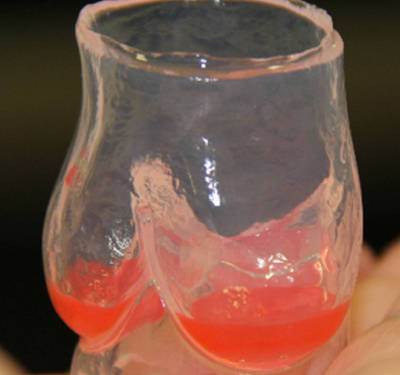Printing hearts from seaweed
The future of heart valve replacements may lie in a combination of seaweeds and 3D printing.
Published online 31 May 2016

Heart valves obtained with 3D printing-assisted method.
© Liberski, A. et al.
Cardiac surgeons sometimes use an extract from brown seaweed, called alginate, to treat heart failure. It is injected into heart muscle, acting like a scaffold, to give the muscle a chance to rebuild itself. Alginate is a carbohydrate made of sugar molecules bound to each other. It has been found to be an attractive bioscaffolding material because it does not invite the formation of potentially life-threatening blood clots.
Tissue engineer Albert Liberski from Sidra Medical and Research Center in Qatar reviewed the latest developments in 3D printing as a potential tool for constructing heart valves from alginate1.
Heart valves are currently replaced with one of two kinds of valves. Manufactured mechanical valves are long lasting but require lifelong use of drugs that prevent the blood from clotting. Tissue valves do not require the use of these drugs, but they degrade over time and must be replaced every five to seven years. Researchers are investigating the use of biodegradable scaffolding materials to construct heart valves upon which human cells can grow and remodel the structure, resulting in a functional valve that’s able to grow with the patient. Alginate-based scaffolds are an attractive option for this purpose. Researchers are studying various techniques that might be used to build these alginate scaffolds.
“3D printing is advantageous since it enables the adjustment of the shape of the valve to the individual needs of patients,” says Liberski. But the technique is still in its infancy, he explains. One team of researchers used 3D printing to make a valve using alginate, but its resolution was low, the process slow, and the valve was not functional. The team also found problems incorporating the cells into the valve that would later grow and form tissue.
Liberski’s team managed to overcome some of the previous limitations by fabricating a functional valve in only ten minutes with cells incorporated properly into its structure. “This puts alginate-based heart valve tissue engineering on ‘fast track’,” he says. This new approach demonstrated that 3D printing should be considered as part of a complementary process in constructing heart valves rather than a singular superior one, Liberski writes in his paper published in QScience Connect. Research in this area is limited and so there is much room for further investigation.
One area that tissue engineers need to keep their eye on, he says, is developments in 3D printing happening outside the academic world, “otherwise they might purchase a 3D printer for 20,000 Euros while another [open source] 4,000 Euro printer could do a similar job.” Also, Chinese artist Li Hongbo developed a platform that allows the transfer of 2D layers into 3D objects. “He very likely has no idea about tissue engineering, but he helped solve one of the current challenges of our field; namely efficiently colonizing objects with cells,” explains Liberski. “Inspiration spikes often from beyond the expert’s domain,” he says. “Therefore the scientist needs to open up to the public, not only to educate them but also to shamelessly harvest ideas from them.”
Reference
- Liberski, A. R. Three-dimensional printing of alginate: from seaweeds to heart valve scaffolds. QScience Connect 2016, 3 (2016). | article
DOI: 10.1038/qsh.2016.115

